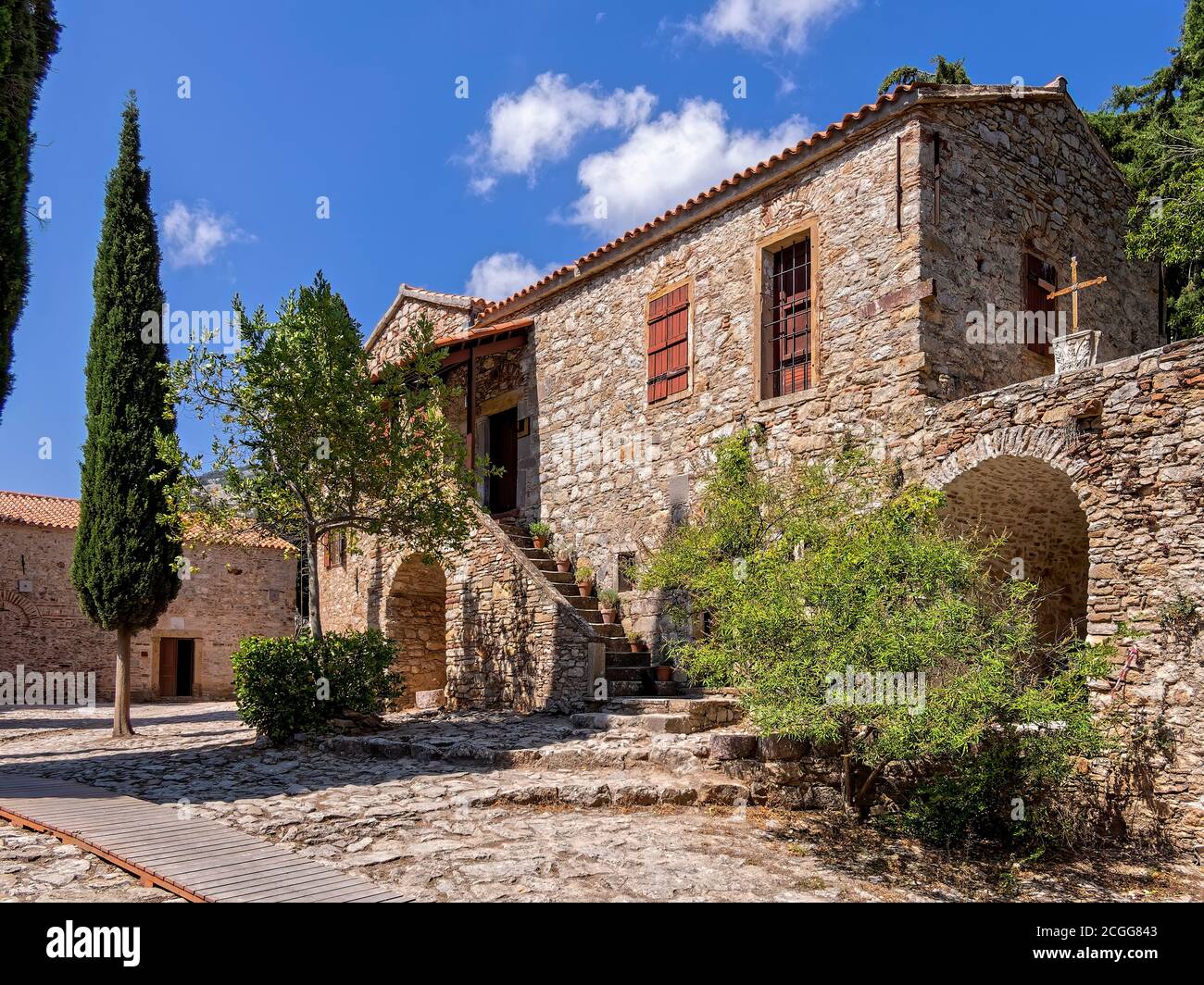Holy Aura. Visiting Nea Moni (New Monastery) you feel "something" even if you're not exactly a religious person. Maybe it's the history accompanying t

Image details
Contributor:
Dimitrios P / Alamy Stock PhotoImage ID:
2CGG843File size:
43.3 MB (4.1 MB Compressed download)Releases:
Model - no | Property - noDo I need a release?Dimensions:
4490 x 3367 px | 38 x 28.5 cm | 15 x 11.2 inches | 300dpiDate taken:
17 July 2013Location:
Chios Island, GreeceMore information:
Holy Aura. Visiting Nea Moni (New Monastery) you feel "something" even if you're not exactly a religious person. Maybe it's the history accompanying this place, or the wind's whispering around the walls, or the voices of 2000 souls burned alive by the Othoman Turks during Greek War of Independence. Nea Moni is an 11th-century monastery on the island of Chios that has been recognized as a UNESCO World Heritage Site. It is well known for its mosaics, which, together with those at Daphni and Hosios Loukas, are among the finest examples of "Macedonian Renaissance" art in Greece. The monastery was built in the mid-11th century, by Byzantine emperor Constantine IX Monomachos and his wife, Empress Zoe. According to tradition, it is built on the location where three monks, Nikitas, Ioannes and Iosif, miraculously found an icon of the Virgin Mary, hanging from a branch of myrtle. At that time, Constantine was exiled in nearby Lesbos, and the monks visited him and told of a vision according to which he would eventually become emperor. Constantine promised to build a church if this should come to pass. Indeed, in 1042, Constantine became emperor, and in gratitude began constructing the monastery, dedicated to the Theotokos. The monastery was early on endowed with privileges: in a chrysobull of July 1049, Constantine Monomachos set the monastery apart from any superior ecclesiastic or secular hierarchy. As a result of land grants, tax exemptions and other privileges granted by successive emperors, the monastery prospered during the Byzantine period. At its peak, around 1300, its estates covered one third of Chios and it is estimated that up to 800 monks belonged to it.The subsequent Genoese domination reduced its wealth, but the monastery prospered again during the Ottoman era, when it was subject directly to the Patriarch of Constantinople, and enjoyed considerable autonomy. The late 16th-century traveler Samuel Purchas recounts that it had 200 monks, and that "alone in all